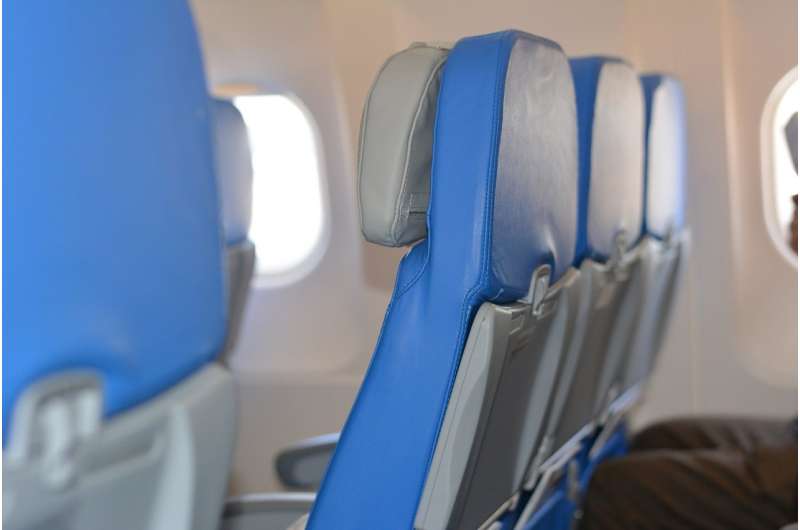New research finds seating assignments on airplanes can reduce the spread of COVID-19


COVID-19 has been shown to spread on airplanes by infected passengers, so minimizing the risk of secondary infections aboard aircraft may save lives. New research in the INFORMS journal Service Science uses two models to help solve the airplane seating assignment problem (ASAP). The models can lower the transmission risk of COVID-19 more so than the strategy of blocking the middle seats, given the same number of passengers.
“Blocking the middle seat on an airplane may provide limited benefit in reducing the risk of transmission of COVID-19. Rather, other health protocols are better supported at preventing the transmission of the virus,” said Sheldon Jacobson, Founder Professor of computer science at the University of Illinois Urbana-Champaign.
The study, “Airplane Seating Assignment Problem,” was conducted by Jacobson, John Pavlik and Ian Ludden, all from the University of Illinois Urbana-Champaign, alongside Edward Sewell from Southern Illinois University Edwardsville.
The researchers introduce two variations of a seating assignment model to optimize how each plane should seat passengers depending on the plane’s size and how seats are distributed on the aircraft.
The two models are called vertex packing risk minimization (VPR) and risk-constrained vertex packing (RCV). To determine which to use to solve ASAP, you match the specific airplane being filled using the best-known disease transmission risks, then solve the instance to generate an optimal seating solution.
“Every seat on the airplane corresponds to a single vertex in the graph. Edges between vertices represent the risk of transmitting a disease between each pair of seats. If either seat in a pair is empty, then there is no risk of transmitting a disease, and hence VPR and RCV are closely related to the vertex packing problem,” continued Jacobson.
Source: Read Full Article